Discover 11 hidden attractions, cool sights, and unusual things to do in Woodbridge (United Kingdom). Don't miss out on these must-see attractions: Woodbridge Tide Mill, Sutton Hoo Helmet, and Parham Airfield Museum. Also, be sure to include Rendlesham Forest in your itinerary.
Below, you can find the list of the most amazing places you should visit in Woodbridge (England).
Table of Contents
Woodbridge Tide Mill
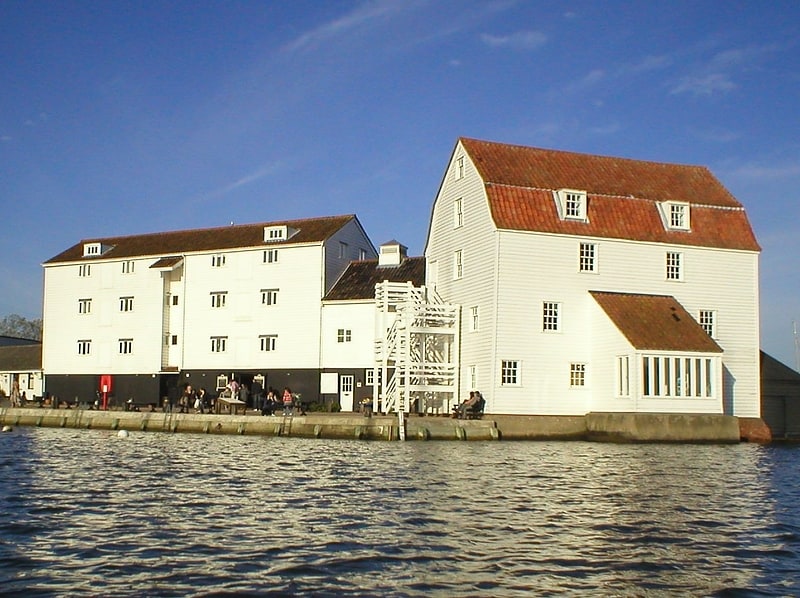
Building. Woodbridge Tide Mill in Woodbridge, Suffolk, England is a rare example of a tide mill whose water wheel still turns and is capable of grinding a wholemeal flour.
The mill is a Grade I listed building. It is a three-storey building constructed from wood; externally it is clad in white Suffolk boarding and has a Gambrel roof. Its machinery reflects the skills and achievements of the early Industrial Revolution. It has been preserved and is open to the public. The reservoir constructed for demonstration purposes is roughly half an acre in extent, the original 7-acre (28,000 m2) one is now a marina.[1]
Address: Tidemill Way, Woodbridge
Sutton Hoo Helmet

Sutton Hoo Helmet is a 2002 sculpture by the English artist Rick Kirby. A representation of the Anglo-Saxon helmet by the same name found in the Sutton Hoo ship-burial, it was commissioned by the National Trust to suspend outside an exhibition hall at the Sutton Hoo visitor centre. At the opening of the centre, the sculpture was unveiled by the Literature Nobel laureate Seamus Heaney on 13 March 2002. It remained in place, dominating the entrance of the exhibition hall, until 2019, when it was moved to the entrance to the Sutton Hoo site.
The sculpture is 1.8 m high, 1.2 m wide, 1.6 m deep, and weighs 900 kg. It is made of mild steel plates that are coloured red. Designed to have a "fierce presence", it is inspired by the fragmentary appearance of the reconstructed helmet rather than the glistening replica made by the Royal Armouries. Steel is Kirby's favoured medium, allowing the sense of scale and dramatic impact found in Sutton Hoo Helmet. The sculpture is illustrative of Kirby's largely figural body of work, and its mask-like quality has been repeated in subsequent pieces.[2]
Parham Airfield Museum
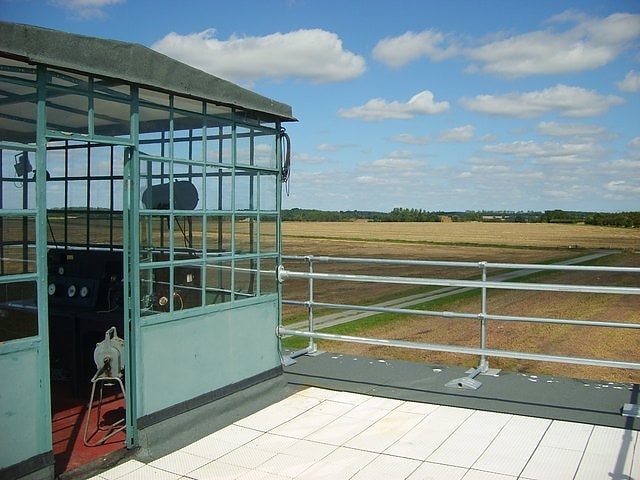
Museum in Parham, Suffolk, England. Parham Airfield Museum is a museum in Framlingham in Suffolk, England. The airfield was named after the village of Parham in Suffolk famously linked to the Aldeburgh poet George Crabbe.[3]
Address: Parham Airfield, Woodbridge
Rendlesham Forest
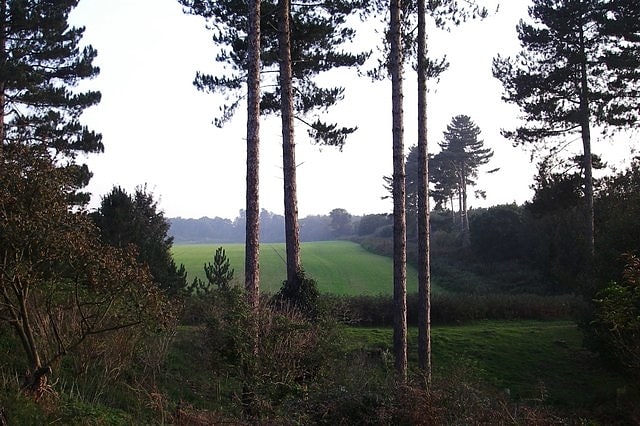
Tourist attraction in England. Rendlesham Forest is a 1,500-hectare mixed woodland in Suffolk owned by Forestry England with recreation facilities for walkers, cyclists and campers.[4]
Address: Rendlesham Wood, Woodbridge
Shingle Street
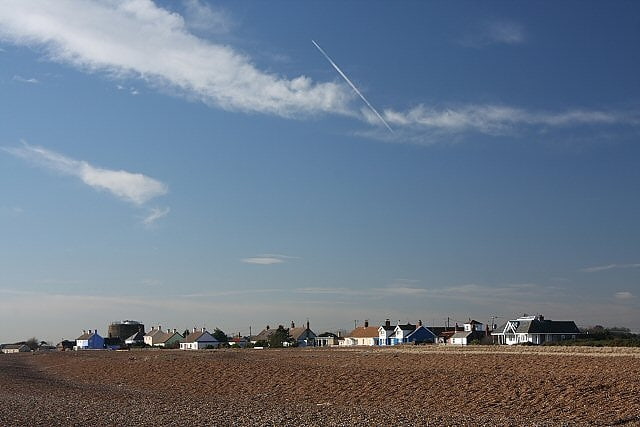
Human settlement in England. Shingle Street is a coastal settlement on the North Sea coast of the English county of Suffolk. It is 8 miles north-east of Felixstowe and 12 miles east of Ipswich at the mouth of the River Ore and opposite the tip of Orford Ness. It is within the parish of Hollesley with HM Young Offender Institution Hollesley Bay Colony nearby. A report from October 2004 suggests that Shingle Street is at risk from coastal erosion and flooding and could disappear within 20 years if sea defences are not erected.[5]
Church of St Thomas of Canterbury
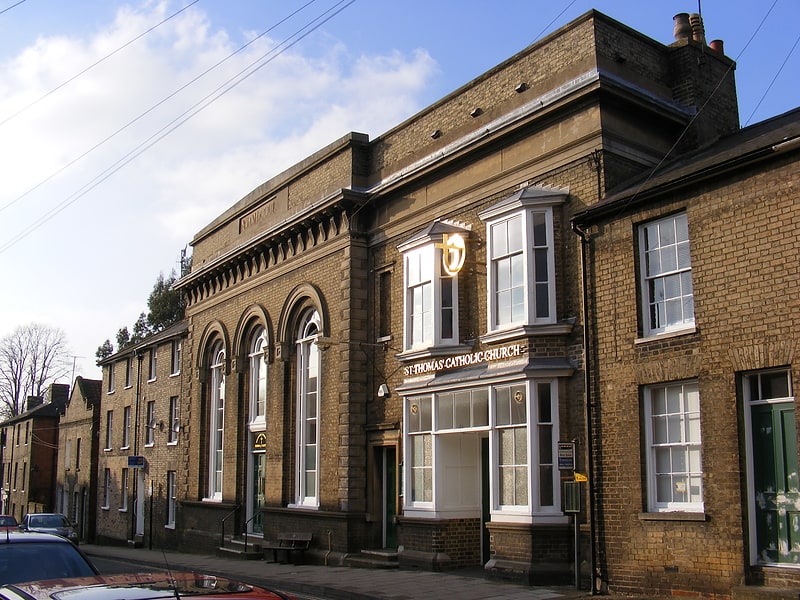
The Church of St Thomas of Canterbury is a Roman Catholic church in St John's Street in Woodbridge, Suffolk.
It is part of the Catholic Diocese of East Anglia. It forms a joint parish with Framlingham. It was built in 1850. It was originally a YMCA but in 1929 it was converted into a Catholic church.[6]
The Suffolk Punch Trust

Museum, Farm
Address: The Colony Stud, IP12 3JR Hollesley
Woodbridge Railway Station

Museum, Shopping, Art gallery
Address: 15 Tide Mill Way, IP12 1BY Woodbridge
Seckford Hospital

Seckford Hospital is a grade II* listed former hospital in Seckford Street, Woodbridge, Suffolk, England. It is of red brick with yellow brick dressings and was built by James Noble in 1840 to a design by Charles Cockerell.[7]
Wuffing Education Study Centre At Sutton Hoo

Cemetery. Sutton Hoo is the site of two early medieval cemeteries dating from the 6th to 7th centuries near the English town of Woodbridge. Archaeologists have been excavating the area since 1938, when a previously undisturbed ship burial containing a wealth of Anglo-Saxon artefacts was discovered. The site is important in establishing the history of the Anglo-Saxon kingdom of East Anglia as well as illuminating the Anglo-Saxons during a period which lacks historical documentation.
The site was first excavated by Basil Brown, a self-taught archaeologist, under the auspices of the landowner Edith Pretty, but when its importance became apparent, national experts took over. The artefacts the archaeologists found in the burial chamber include a suite of metalwork dress fittings in gold and gems, a ceremonial helmet, a shield and sword, a lyre, and silver plate from the Byzantine Empire. The ship burial has prompted comparisons with the world of Beowulf, the Old English poem is partly set in Götaland in southern Sweden, which has archaeological parallels to some of the Sutton Hoo finds. Scholars believe Rædwald, king of the East Angles, is the most likely person to have been buried in the ship.
During the 1960s and 1980s, the wider area was explored by archaeologists and other individual burials were revealed. Another burial ground is situated on a second hill-spur about 500 metres (1,600 ft) upstream of the first. It was discovered and partially explored in 2000 during preliminary work for the construction of a new tourist visitor centre' the tops of the mounds had been obliterated by agricultural activity. The cemeteries are located close to the River Deben estuary and other archaeological sites. They appear as a group of approximately 20 earthen mounds that rise slightly above the horizon of the hill-spur when viewed from the opposite bank. The visitor centre contains original artefacts, replicas of finds and a reconstruction of the ship burial chamber. The site is in the care of the National Trust; most of these objects are now held by the British Museum.[8]
Hutchison's Meadow
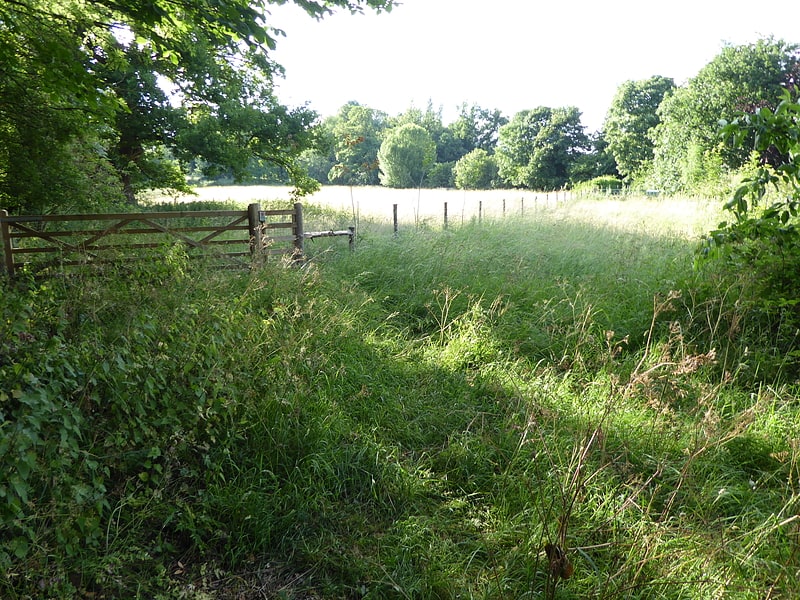
Nature reserve. Hutchison's Meadow is a one hectare nature reserve in Melton in Suffolk. It is owned and managed by the Suffolk Wildlife Trust.
This is mixture of wet and dry grassland. It has diverse flowering plants such as southern marsh orchid, common fleabane and ragged robin in wet areas, and yellow rattle and bulbous buttercup in drier ones.
There is no public access to the site.[9]